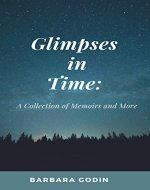The idea of a murder victim’s ghost returning to solve their own murder or punish the culprit is nothing new to horror fiction. However towards the end of the twentieth century a shift occurred: ghosts didn’t just come back to solve their own murders, they then stuck around to solve other people’s, most notably in the seventies television series Randall & Hopkirk (deceased). The series didn’t lead to a flood of such stories at the time, and even its Reeves and Mortimer 2000 reboot passed somewhat unnoticed.
Now this type of story seems to be making a comeback, shedding its horror roots almost completely and crossing into the cozy mystery genre. Several books with this theme have passed through our reading queue in 2015 and 2016, admittedly of varying quality, but the best are very good and several series are ongoing. As more titles emerge, this type of story even seems to be developing its own trends and genre-criteria. Using three of the best titles we’ve read recently, these trends are explored below.
Southern Bound and Southern Spirits are two different stories by different authors with similar titles, but both are part of the “ghost detective” subgenre. In Southern Bound, Max has been hired to deal with a historic mystery only to find his new office comes complete with the ghost of a 1940s P.I. Southern Spirits has Verity, newly single, aided by the ghost of her ex-fiancee’s gangster uncle, and solving mysteries to try to earn enough to keep her house. Gillian Larkin’s Storage Ghost Murders series has Pearl, a helpful ghost who came with Grace’s bric-a-brac shop and helps her solve the cases of the ghosts who arrive with certain items — when she’s selling goods from estate sales, a few will have had owners who went before their time. The series was so popular that Pearl now has her own spin-off series with a retiree called Derek, solving the cases Grace can’t get around to.
Taking these three books as examples, there are a few common features emerging. The ghostly sleuth usually has a living partner to handle the small problem of people not being able to see or hear them, and also perhaps to give some stakes: after all if the detective is already dead, they can’t be killed. In most cases the human partner takes the role of detective under stress and has limited resources — Max’s need for a job, Verity’s house, and even Grace balancing being a detective with running her business. Derek, who is retired, would be something of an exception as he is doing it largely to fill up a slow retirement, but even he is on a pension and limited income. I have not yet encountered one where the person talking to ghosts is a police officer or lawyer, with the full resources of the law. This might be partly to make the human character more relatable to the reader, but also to introduce both a degree of wish fulfilment and reassurance that the human character is not perfect.
There are however some tropes that you might expect that aren’t common across the books. Oddly enough, the first case in the series isn’t always about solving the ghostly sleuth’s murder: only Southern Bound fulfils that trope of the books listed above and Max is working on another case at the same time. Likewise, the ghostly partner isn’t always a detective or trained in investigation: Southern Spirits has Uncle Frankie the gangster, and Pearl is simply nosy (sorry, I meant curious).
It is interesting how few of these books, despite handling ghosts, the afterlife, and issues normally associated with religion, are religious books. There is a very light focus on faith, and in most cases the afterlife isn’t covered in any detail. In others the ghosts haven’t entered it due to their unfinished business, so don’t know anything about it.
The depiction of the afterlife and the number of other ghosts encountered vary considerably between books, although it isn’t a surprise that most authors have some method of explaining why ghosts can’t tell the living what it is like after death. Also, just about every ghost will actively discourage their partner from joining them “on the other side”. Obviously the ghost doesn’t want their human dead, in a few cases because it would mean finding another human to interact with the living for them, and from the author and reader’s point of view if there is no downside to being dead, where is the suspense?
It is worth noting that there’s no guarantee the victim knows who killed them. If the attacker was wearing a mask or they died by poison, the victim might be able to say very little more than they could have told the police if they had survived. Gillian Larkin deserves a special mention here for introducing the issue of traumatic memories: People don’t like remembering unpleasant things and block them out, and so do some ghosts. In other stories, these problem can be more like the Columbo series: the ghost may know who has killed them, but trying to find the proof and then get access to it in a way that is admissible in court is the real problem. The ghost can stick their head in a safe and read the documents about a bad guy or gal’s illicit dealings, but getting a warrant to open that safe or publish the documents is a very different challenge. This might be one of the reasons so few of the living in this genre are police or lawyers, since they’d be far too good at getting through the paperwork.
Finally the one thing that comes across from these books is that this is a marvellous opportunity for comedy. There are ghosts in baths, ghosts pretending to be cellphones, ghosts on window ledges, eavesdropping, prying, and generally embarrassing their poor partner no end. From the darkest of humour to near-farce and slapstick, the real draw to these books has to be the wry and varied humour found throughout the best of the type, which livens up even the most trivial of mysteries.
So why does this genre suddenly have such appeal? The idea of a ghostly ally is an engaging one for many readers. After all small children have invisible friends, and who hasn’t wanted a guardian angel at some point in life? In another sense it appeals to the readers’ sense of justice: that even the dead can still convict their killers. In other ways it is comforting; that the afterlife isn’t that bad, and that there is in fact an afterlife. However that doesn’t explain why these books are coming out now.
With the explosion of indie press over the last few years, titles previously deemed non-commercial are suddenly getting published. It could be that publishers simply thought there wasn’t a market and, given the costs of paperback distribution, there may not have been. The comedy potential might be another reason, since there has been a market for lighter-hearted work recently as people tire of darker stories.
I’m not sure what the future of this type of story is: whether it will move back towards horror or remain in the lighter comedic modern version. It would take a lot more authors moving into this type of story for it to develop into more than a sub-genre of cozy mystery as there simply aren’t enough books out yet. However, most of the good ones are series, so it seems there’s life in ghosts yet and will be for the foreseeable future.
We have just joined medium.com and were planning a weekly series about trends in the indie and small press book market, using books the club has read as examples. Articles will be placed on Bookangel as well in case Medium doesn’t work out long term.
If you’d like to help us make a spash on Medium, we get credits for reads, so please click here
















